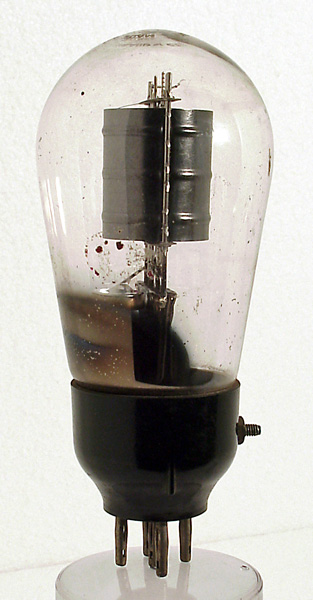|
MPT4Sensibly equivalent¶ to:See also:
|
|
|

|
M-OV had trouble designing the MPT4. Not only did it take them a clear two years to produce technically successful copies of Mazda's landmark AC/Pen but thereafter they had to redesign it several times (including the beam tetrode version MKT4) over the next 5 or 6 years.In the end they solved the problem by buying equivalents from other manufacturers and re-labelling them.Part of the problem was that M-OV had invested heavily in the azide process during the late 1920s and were either unable or unwilling to switch overnight to manufacturing oxide-coated cathodes of the rating and quality demanded by powerful, for that time, audio output valves.Another factor was that M-OV were strongly anti-pentode at that time and may have been unwilling to invest in proper, full-scale development in what was, for them, a new and uncharted field. Instead, as is well known, they put their money into circumventing the pentode - by inventing the beam tetrode, with some help from RCA in America.
The cathode is a flattened tube and the two inner grids are shaped to have a central bulge and then flatten towards the support rods. Grid three is a open wire helix near to the anode cylinder and far away from the inner grids.See also the catkin versions MPT4 (B5 base) and MPT4 (B7 base).The balloon envelope is 52 mm in diameter and, excluding the B5 base pins, it is 110 mm tall.References: Private communication, data-sheet & 1040. Type MPT4 was first introduced in 1931. See also 1931 adverts. |
Pin Connections
| 1 | 2 | 3 | 4 | 5 | sc |  a | g1 | h | h | k,g3 | g2 |
|
|
Absolute Maximum Operating Conditions¶
| Vh | Ah | Va | Vs | Vg | mAa | mAs | 
| 4.0 | 1.0 | 250 | 200 | -10.5 | 32.0 | 5.5 |
|
Updated June 11, 2022.
|
|